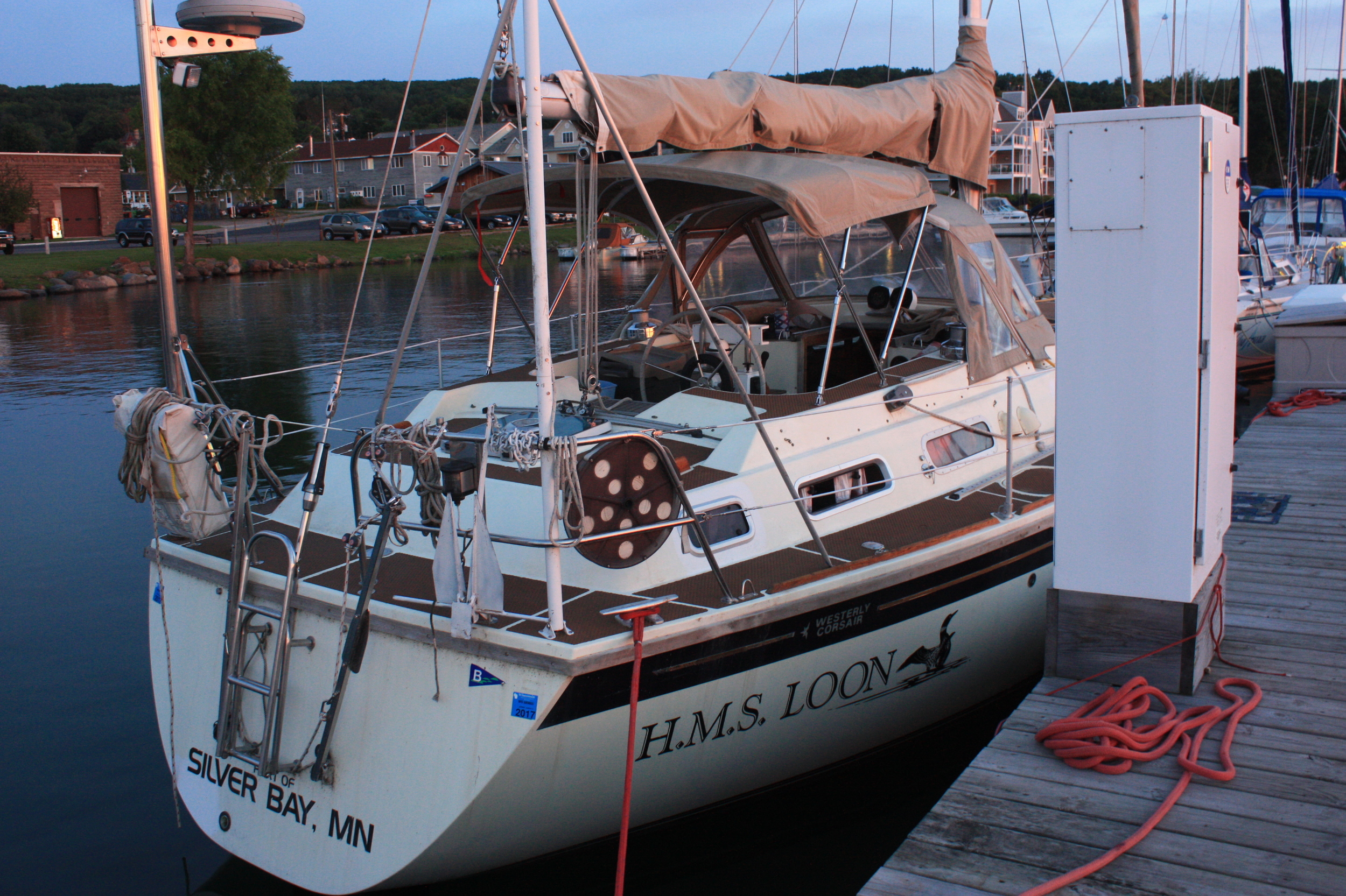We want to welcome you aboard the ‘Loon’! She is English, a Westerly built in 1985. Thirty-six feet and about 17,000 pounds she is made for sailing in the North Sea. She sits a bit high on the water and with her center cockpit some feel she is shorter than her actual length. Her sisters have sailed in many if not most of the world’s oceans. Tough as she is, she is also a lady and must be treated gently.
A few points for your consideration.
1. Even experienced sailors should wear floatation equipment in all but the calmest weather. A reasonable person would wear it at all times away from the dock. It’s not only the water but it’s the water temperature that may put you in danger rather quickly if you fall overboard.
2. Use the three contact points approach as you move outside the cockpit. There will be a discussion of person over board procedures and roles assigned.
3. Do not force anything that seems to be stuck or resisting your efforts. Sailing can require strength which often makes it difficult to sort out the difference between enough effort and too much. Ask when you need to use significant force. Often extra effort is a sign that something is not functioning properly. There might be an easier way and attempting to overpower a problem may lead to damage.
4. There will be a discussion of procedures for docking and returning to the dock. Roles will be assigned. The first time or two may be confusing. Take the time to clarify your role and ask why you are being asked to do something. The more you understand the intended outcome and risks the better prepared you will be should wind or other conditions change.
5. While the Loon is solid and seaworthy not all metal tubing and supports are intended to take your weight. Please walk carefully. We will walk around the boat on the deck to get comfortable before we leave the pier.
6. At least daily go through the engine checklist including oil level, coolant level, and transmission oil level. Record these in the Log. It only takes a minute.
7. Help us keep the Log up to date. Add anything you care to report about the area sailed or events while sailing.
8. Please attempt to leave the Loon cleaner than you found her. If you find yourself wanting something to do, it seems there is always cleaning to be done. You are our guest(s) and we do not expect you to work.
9. ‘Heads’. There will be a demonstration of how to use the head. These are not your home toilet; pipes are much smaller for instance. Since the Head is a small area demonstrations tend to be one at a time. We attempt to use a minimum of water to maximize service of our waste tanks. The Loon was originally designed to dump the waste at sea. Appropriately, this is no longer acceptable.
10. Water from the faucets runs into the lake and does not contribute to the waste tanks. We use Dawn and other biodegradable soap. Water faucets may take a bit to warm up. We heat the water whenever we run the engine. Faucets may drip for a moment after you shut the knob. It should not take a ‘gorilla’ grip to turn off the faucet.
11. AC outlets will not usually be running when the Loon is away from the dock.
